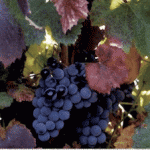 FRENCH WINE HISTORY AND REGIONS
FRENCH WINE HISTORY AND REGIONS
BY CAROL DUFF
Wine is a beverage made from fermented grape juice and thus contains alcohol. Cultivation of grape vines started several thousand years ago and are mentioned many times in the Old Testament. The ancient Egyptians made wine, and the Greeks exported it. During the time of the Roman Empire there was such a degree of wine making that a surplus occurred. Emperor Domitian uprooted half of the vines in Italy and with the eventual replanting, vineyards extended into Germany, Southern England, and Northern France.
During the Middle Ages, 400-1200 AD, little progress was made in wine making. Around 1200 monasteries took over the process of wine production. Later the rich owned vineyards, but the French Revolution and the secularization of the German vineyards by Napoleon took vineyards from the hands of the church. By the beginning of the 13th century, the wines of Bordeaux, which was under the English domination from 1152 to 1435, were shipped to England. Drinking habits were influenced by the fashion of court, political relations with producing companies, and the changing rates of excise duty
As early as 1727 the Bordeaux merchants started to classify their finest red wines. By 1855 such a classification, based on market price for each wine, received official recognition. The mid and second half of the 19th century saw European vineyards, including those in France, suffer from diseases, pests, mildew or Oidium and Phylloxera. Ending in 1936 a quality control law, appellation controlee, which is a model for similar legislation, went into effect in France and other countries as well. WHAT IS A TERROIR? A terroir is a group of vineyards or vines from the same region that belong to the same appellation as they share the same type of weather conditions, soil, grapes, and wine making which gives a personality to the wines from each region. Terrior is equal to region, plus appellation, plus grapes, and then wine making.
There are nine wine regions in France. Let us explore these regions alphabetically.

Alsace
The first French wine region to discuss is the Alsace which has been producing wine since the conquest of the area by the Romans. The Alsace is located in the northeast section of France, between the Rhine and Vosges Rivers. Specifically it is bordered on the West by the Vosges and the East by the Rhine which is the border between France and Germany. This region has had a very chaotic history as it has shifted between France and Germany. The region is at the center of Europe and the main city of Alsace, Strasbourg, is host to the European parliament.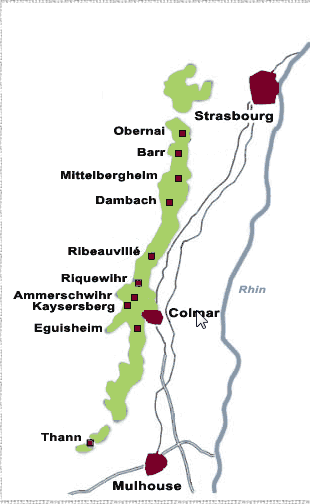
The Alsace contains green hills and medieval villages and its wine road is one of the best wine sceneries in the world. The climate is hot in the summer and cold in the winter with frequent snow falls. It is the smallest wine region in France and the main grape varietals that make up the vintages of this area are Riesling, Pinot Blanc, Gewurztraminer, Tokay Pinot Gris, and Sylvaner. The Alsace produces over 165 million bottles of wine per year, with 90 percent being white. The Gewurztraminer makes the most typical Alsatian wine. Gewurz means “spicy” in German and that is the main characteristic of this varietal. Traminer means “coming from Tramin” which is a small city in south Tyrol of Austria, where the grape originates.
The wine is fruity with strong aromas and a very flowery, perfumed bouquet. The Pinot Blanc is less aromatic than other white Alsatian wines, but it balances between freshness and softness to make the lightest wine in the Alsace. Pinot Blanc is sometimes combined with Auxerrois and Klevner grapes which gives the wine a more Alsacian flavor. The Tokay Pinot Gris makes a full-bodied white wine. Tokay of the Alsace is made totally from Pinot Gris grapes. Pinot Gris is an Alsatian grape variety which is also called “Tokay d’Alsace.” Pinot Gris is used for intense white wines of the region. The Pinot Gris grape has small bluish grains and its character varies depending on a good or bad growing season.
It might by light and fruity or robust. The Sylvaner varietal originally came from Austria and was introduced into the Alsace two centuries ago. This wine is better served young. Finally, the Cremant d’Alace is a sparkling wine made the same way as champagne with Pinot Blanc, Pinot Gris, Pinot Noir, Riesling, or Chardonnay. There are 6,000 wine growers in the Alsace. The Riesling is known to make the finest Alsace wine and produces a dry, well-balanced wine. The Alsace Riesling must not be confused with the German Riesling, which makes a sweet wine. The soil of this region is limestone and Clayey-limestone. There are also sandy areas, granite to clay, and marl.
Volcanic soil lies on Rangen and Kastelberg grand crus. The appellation is Riesling appellation Alsace Controlee. Wine classification in the Alsace includes a grand cru grade to distinguish the best of the best. The classifications of wine are as follows: AOC-Alsace Grand Cru which is followed by the name of the grape varietal and the name of the vineyard where the wine is produced. AOC Alsace which is usually followed by the name of the grape variety such as Sylvaner, Pinot Blanc, Gewurztraminer, and Riesling. AOC Cremant d’Alsace or sparkling wine.
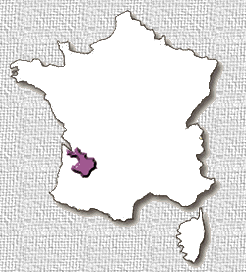
Bordeaux
The Bordeaux region, with its 57 appellations, is the most important and well known wine producing region in France and possibly in the world. This region has approximately 7,000 chateaux and 13,000 wine growers and lies in the south west of France, near the Atlantic coast, around the city of Bordeaux. The region covers Gironde, an administrative department as well as a river of the Aquitaine region. Bordeaux wine takes its name from the main city of the region. There are no vineyards in the city, but start at the boundaries of Bordeaux. This wine region spreads 60 miles around the city on a large estuary, along the three rivers of Gironde, Garonne, and Dordogne, in Europe.
The climate of this region is usually temperate with a short winter and a high degree of humidity that is provided by the Atlantic Ocean. Wine has been grown in the region for 2,000 years, probably before the arrival of the Romans. The poet Ausonius wrote about the arrival of the Romans in 56 BC. Bordeaux was under English domination for a time and boats loaded with barrels of Claret were delivered to England. The Claret was a light red wine, which the Englishmen enjoyed and the word Claret still refers to the Red Bordeaux.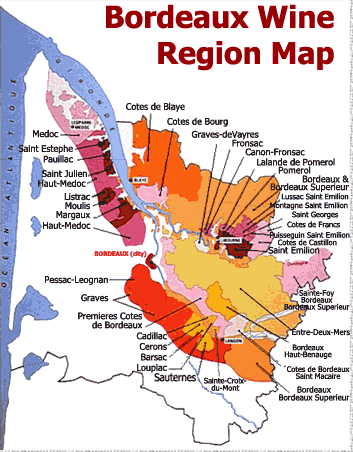
The large diversity of Bordeaux reflects an equal diversity in soil. Vines are cultivated in gravel from the Pyrennes Mountains, but also in Clayey-limestone, clay, sand, and limestone. Bordeaux counts for one third of the good quality French wine (AOC, crus bourgeois, and crus classes.) In this area the wines are so excellent that a Bordeaux ranking is needed to classify the best of the best. Some of the best wines are Margaux, Petrus, Cheval Blanc, Haut Brion, and all the others. Of the red grapes Merlot makes up 50 percent of Bordeaux vineyards, Cabernet Sauvignon claims 26 percent and Cabernet Franc 10 percent. Other red grapes are occasionally Petit Verdot, Malbec, and Carmenere. In the white grape section of the Bordeaux, Semillon makes up 8 percent, Sauvignon makes up 4 percent and others are occasionally Muscadelle, Ugni Blanc, Colombard, and Folle Blanche.
Most of the grapes that are grown in this region are for red wine and Cabernet Sauvignon and Cabernet Franc are used. These grapes have good tannin, vigor, and adequate keeping qualities. Merlot offers a suppleness and freshness and as mentioned above is the most planted grape in the Bordeaux. The Grands Crus Classes are classified into five categories to distinguish the best from the best. These classes are:
Premiers grands crus classes
(1st) First Great Growths Deuxiemes grands crus classes
(2nd) Second Great Growths Troisiemes grands crus classes
(3rd) Third Great Growths Quatriemes grands crus classes
(4th) Fourth Great Growths Cinquiemes grands crus classes
(5th) and also second wines.
Bordeaux has 21 appellations with Saint-Emilion as the oldest wine region of the Bordeaux. UNESCO has recognized the great terroir of Saint Emilion and placed the site on the World Heritage List. The wines of this area are thought to be the most robust of the Bordeaux as they are very colored, and reach their maturity quicker than other red Bordeaux. The classification of St. Emilion is complex.
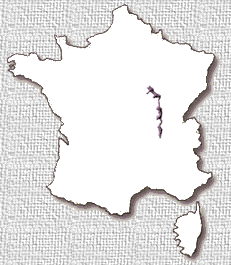
Burgundy
The Burgundy region begins one hundred kilometers south of Paris and extends to Lyon and stretches for 225 miles. Burgundy is made up of various soils and is divided in the Chablis, Cote d’Or (further divided into Cote de Nuits and Cote de Beaune), Cote Chalonnaise, Maconnais, and Beaujolas. Burgundian wines are subtle reds and characteristic whites. The varietal used for red wine is Pinot Noir and for white wine is Chardonnay. The area has cold winters and warm summers.
Wine production began in Burgundy when the Romans invaded the area. During the 6th century one of the kings gave his vineyards to the church. At the time of the French Revolution most of the best vineyards belonged to the church and monasteries which produced the best Burgundy wines. The French Revolution caused the confiscation of the vineyards from the church and gave them to the republic which split the large vineyards into small vineyards that still prevail today. An edict by Kind Charles VI in 1415 states that wines that could be called Bourgogne would be those produced above the Pont de Sens, which was a bridge of Sens, a city just north of Chablis. He further divided the wine into two categories; High-Bourgogne and Low- Bourgogne. Today the laws of 1905 and 1919 rule the appellations of Burgundy. The appellations are comprised of territories made up of small crops called “climates.”
The varieties are strictly ruled in all of Burgundy. About 600 vineyards are given the appellation of Premier Cru. These are officially designed from the old ways of wine making that accepted them as the best wines. The name of the village and name of vineyard, in the same lettering appears on every Premier Cru label. Only 33 vineyards may use the Grand Cru label. These used to be called Tete de Cuvee. These vintages are the best among the best. Only the name of the vineyard is important on the label of Bourgogne Grand Cru. Soils of the Burgundy regions range from limestone complete with fossils to clay, red clay, with clayey limestone and gravel, rocks and humus. Corton is the largest area of Grand Crus in Burgundy.
At the top of the hill, Corton-Charlemagne, which makes a great white Burgundy, is one of the best regions among Montrachet and Meursault. It is believed that Charlemagne owned this area 1,000 years ago. The Bourgogne appellation covers the entire Burgundy region with vineyards of Bourgogne AOC located in 385 villages. The grapes used are Pinot Noir for red and Chardonnay for the whites. Quality of the wines varies from supple to acidic depending on the producer.

Corsica
The island of Corsica is off the south coast of France. The wines produced in this region are dry whites and subtle roses’. The best Corsican wine comes from the coast. Corsica is known for its two best wines, Patrimonio and Ajaccio. Nieluccio is the local varietal and is the main grape used in red wine with Vermentino used for white. The Ajaccio comes from vineyards that are 1,500 hundred feet above sea level. This makes Ajaccio one of the highest wine regions in all of France. Due to the warm Corsican weather and the sea effects, the red wine of Ajaccio is very unique. The main grape used for this wine is Sciacarello, which is a local variety that takes full advantage of the environment
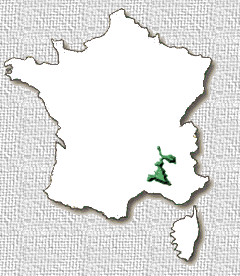
Cotes du Rhone
 The Cotes du Rhone is probably the most diverse of the French wine regions. The Rhone valley is a long narrow area which stretches on both banks of the Rhone River. The region begins south of Lyon and finishes 125 miles further downstream, just south of Avignon. In the north section of the region the winters are cold and the summers warm while in the southern portion the weather is Mediterranean with mild winters and hot summers.
The Cotes du Rhone is probably the most diverse of the French wine regions. The Rhone valley is a long narrow area which stretches on both banks of the Rhone River. The region begins south of Lyon and finishes 125 miles further downstream, just south of Avignon. In the north section of the region the winters are cold and the summers warm while in the southern portion the weather is Mediterranean with mild winters and hot summers.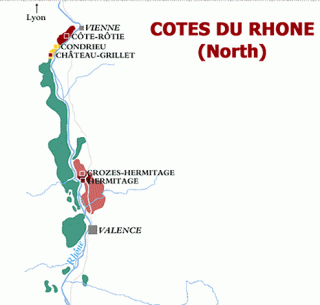
Over 75 percent of the wines from this region are red with a higher alcohol content than most reds. The soil is stoney and mostly made of granite. There are diverse wines grown in this region due to the weather differences and the winemaking conditions of the Rhone valley. The main varietals used are Grenache, Syrah, and Carignan for reds and Clairette, Ugni Blanc, and Grenache Blanc for whites. This region is also known for the Viognier which is a white made in the northern part of the region.
The Viognier is one of the region’s most distinctive whites. With Provence, Cotes Du Rhone was one of the first regions to produce wine in France. The first vines were planted by vine growers coming from Marseille. Because this area borders a river, it was easy to send bottles of wine to the Mediterranean port of Marseille. The Rhone region contains many Roman ruins which attests to the fact that Romans were there in ancient times. The Romans developed the vineyards and the oldest are Cote Rotie and Hermitage. In the Middle Ages monasteries began to manage the vineyards which were given such names as Chateauneuf, which was renamed Chateauneuf du Pape when the popes began to spend their holidays there. Apparently the popes enjoyed being near where they could enjoy wines. Wines of the Cotes du Rhone can be separated into two geographic sections.
North of Cotes du Rhone are the Cote Rotie, Condrieu, Chateau Grillet, Hermitage, and Crozes Hermitage. South is Gigondas, Chateauneuf du Pape, and Cotes du Ventoux. The Cotes du Rhone appellation is very large with approximately 10,000 vine growers who produce 250 million or more bottles of wine. Most of the vineyards are in the southern portion of the Rhone Valley. Inside the Cotes du Rhone generic appellation, the Cotes du Rhone villages’ label, based on history, quality, and specificity, applies to a small number of villages. The best may use the village name after Cotes du Rhone. The wines of this region are of medium body, many times spicy, and very diverse from one growing area to another.

Languedoc-Roussillon
The Langeudoc-Roussillon region is bordered by the Mediterranean Sea, between the Rhone delta and Spain. It lies west of the Rhone and Camargue to the border of Spain and the Pyrenees mountains. This area attracts many tourists as some of the finest beaches in France are found here. The countryside is uncrowded and beautiful. Wine is important to the economy of the region and this region is one of the most successful at wine production. Languedoc- Roussillon is the largest vine growing area in the world, surpassing Bordeaux and even the wine region in Australia. There is a long history of wine making and very favorable natural conditions and climate in this region.
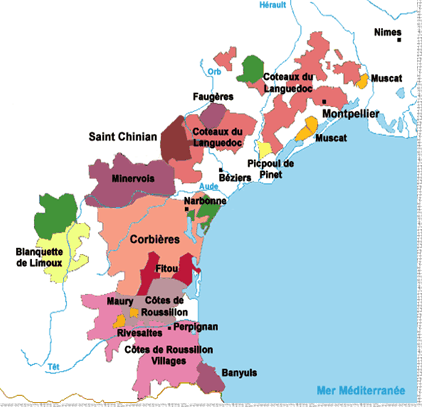
The main grapes used for reds are Carignan, Cinsault, Grenache, Syray, Mourvedre, with Cabernet Sauvignon and Merlot replacing the mediocre varietals such as Alicante and Aramon. For whites the varietals are Macabeu, Clairette, Roussanne, Marsanne, Ugni Blanc, Bourboulenc, with Viognier and Chardonnay having also been successfully introduced into this region. Chardonnay is now the most widely used grape in the region. For sweet white wine Muscat Blanc, Muscat Romain, and d’ Alexandrie and Grenache are used.
In the early 70s, it became apparent that the region was not ready for the changing wine market. Quantity was exceeding demand and the quality was mediocre. The region began to change to new techniques, such as aging in oak barrels. The poor quality grape varietals were replaced with noble grapes such as Cabernet Sauvignon, Merlot, Chardonny, and Viognier. The best vineyards were selected for production of improved quality. Now quality is favored over quantity. This region produces mainly red wines that are mostly Vin de Pays, with a good share of Vin de Table. They are great as every day wines. The five appellations are; Corbieres, Coteaux du Languedoc, Cotes du Roussillon, Saint Chinian, and Costieres de Nimes. Herault wines have taken a place among renown crus as it produces famous Muscats with aromatic flavor. In the Aude the best loved wines are Minervois and Corbieres while the Eastern Pyrenees produces naturally sweet Roussillon wines. AOC wines are interesting to follow as grape varietal, techniques, and vineyards are selected to improve quality of the wine.
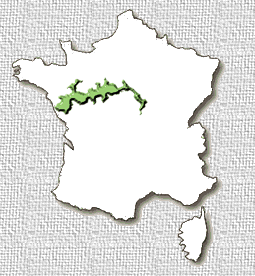
Loire Valley
The Loire Valley, a very beautiful area which is famous for its white wines. About 75 percent of the wine production of this area is in whites. The region is wide and follows the river beginning in Auvergne and Massif Central and ends at the Atlantic Coast near Nantes. In actuality, the Loire Valley region is made up of several different regions which have the wide and deep Loire River in common. Chenin Blanc or Sauvignon are the most widely used varietal of this region. Vines were already being cultivated in this area when the Romans invaded. On the banks of the river grapes for white wine are grown. Further up on the hills grow the reds.

Most of the vineyards belonged to the monasteries who developed the wine production of the whole region. There are nine appellations for this region. They are Muscadet, Anjou, Coteaux du Layon, Saumure, Touraine, Bourgueil, Vouvray, Pouilly Fume and Sancerre. Some wines of this region have long histories. In Anjou wines were very popular as early as the 6th century. During the 13th and 14th centuries, Anjou was the most popular wines in England and then Holland and Belgium. The Coteaux du Layon appellation lies along the Layon River where the vines are protected by the hills. This area is well known for the sweet white wine, notably Chaume, for the past 15 centuries.
The growers in this region leave the grapes on the vines until they are over-ripe before harvesting. Coteaux du Layon has the latest harvest of all the areas. In the Saumur appellation the wine sits in caves in the chalky soil. Here the wine can stay in a stable condition. Reds, dry whites, and sparkling whites and roses’ are produced here. The red wines are light and fruity and among the best red wines in the Loire Valley. The sparkling wines can be a cheap alternative to Champagne.
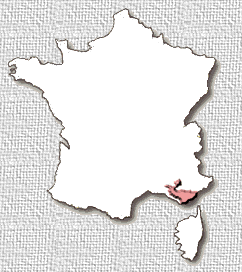
Provence
Provence wines are produced on the border of the Mediterranean, from La Ciotat to Saint Raphael, and from Sanary toward Carnoules and around the Var Valley toward Nice. The weather of this region is cool in the winter and hot in the summer. Winters can be cold the further away from the sea the area is located. The soil of the region is siliceous or limestone or sand. Vines existed in Provence when the Greeks arrived in 600 BC. The Greeks, followed by the Romans introduced growing and pruning techniques.

The red varietals used in the region are Carigan, Cinsault, and Mourvedre. The whites are Ugni, Clairette, and Rolle. Fruity rose’ is the speciality of the area. In fact one half of all rose’ produced in France comes from the Provence region. White wine can be dry and rather sparkling. Bandol is one of the oldest vineyards in France with the first vine having been planted by the Romans 2,500 years ago. The port of Marseille is close to this region so this type of wine could be found in India or Brazil 200 years ago.
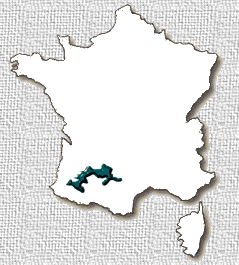
South West
Wines of this region are of excellent quality for the value. The area is between the Bordeaux region and the Pyrenees. Virgil and Horatius have praised wines from this region. The Midi-Pyrenees region is the biggest French region. This region extends from the Pyrenees Mountains to the Massif Central on the East and the Atlantic Ocean o the West. The Midi-Pyrenees is a region of mountains and plateaux with lakes and rivers. The range of differences in land is reflected in the diversity of the wines.

The climate for this area is Oceanic with cool and rainy winters and springs and warm summers, with sunny autumns. The soil of this region is of clay, limestone, and pebbles from the Pyrenees Mountains. This is also one of the oldest wine growing regions of France. Wines from the South-West have been confused with Bordeaux wines, which did cause many problems at the beginning of the century when the area of Bordeaux production was delimited. The diversity offer unfashionable wines with much personality. The main varietals of this region are Cabernet Sauvignon, Tannat, Merlot and Malbec for red wine. The primary white grapes are Semillon, Sauvignon, Ugni Blanc and Manseng.
There are five appellations from this region. They are Bergerac, Cahors, Madiran, Jurancon, and Monbazillac. It is said the wine from the Jurancon was used for the baptism of King Henry IV. The vines of this area grow on the steep slopes and are subjected to both oceanic and mountainous climates. The Monbazillac appellation produces the best sweet wines of France. The noble-rot must attack the grapes before they are harvested. As they age their color intensifies and they develop intense and rich characteristics.
FRENCH WINE APPELLATIONS
There are four main terms used to describe the quality of French wines. The first is Appellation d’Origine Controlee (AOC) or regulated wine of origin. These wines are of higher quality and are strictly governed with rules that cover methods for growing and producing, localization, grape variety, and minimum contents of alcohol. All of these wines are tasted and analyzed and this strict legislation quarantees an excellent quality of AOC wines. The word Origine is often replaced by the name of the place of origin of the wine or “Appellation Beaujolais Controlee.” The Appellation d’Origine Vin De Qualite Superieure (AOVDQS) means higher quality wine of origin.
These wines come just after the AOC and are strictly controlled by the Institut National des Appellations d’Origine (INAO).” Rules apply to the zone of production, grape-variety, minimum alcohol, and methods of growing and producing. Vin De Pays means country wine and these wines contain 100 percent of a single grape varietal, approved of by a Conseil Interprofessionnel or joint committee of professionals, grown in a zone that is strictly limited. All wines with this label must be tested. Vin de Table means table wine and is the everyday wine of France. It represents approximately 70 percent of French wine production and must contain between 8.5 and 15 percent alcohol.
French wines are as varied as the regions and terroirs they originate from. Undoubtedly, wine connoisseurs and wine lovers alike will find at least one or more wines to suit their taste buds.
COPYRIGHT
CAROL WARE DUFF
2005

Carol graduated from Riverside White Cross School of Nursing in Columbus, Ohio and received her diploma as a registered nurse. She attended Bowling Green State University where she received a Bachelor of Arts Degree in History and Literature. She attended the University of Toledo, College of Nursing, and received a Master’s of Nursing Science Degree as an Educator.
She has traveled extensively, is a photographer, and writes on medical issues. Carol has three children RJ, Katherine, and Stephen – one daughter-in-law; Katie – two granddaughters; Isabella Marianna and Zoe Olivia – and one grandson, Alexander Paul. She also shares her life with her husband Gordon Duff, many cats, and two rescues.
ATTENTION READERS
We See The World From All Sides and Want YOU To Be Fully InformedIn fact, intentional disinformation is a disgraceful scourge in media today. So to assuage any possible errant incorrect information posted herein, we strongly encourage you to seek corroboration from other non-VT sources before forming an educated opinion.
About VT - Policies & Disclosures - Comment Policy



